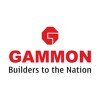Filter interviews by
Navayuga Engineering Company Senior Engineer Interview Questions and Answers for Experienced
Navayuga Engineering Company Senior Engineer Interview Experiences for Experienced
1 interview found
I applied via Referral and was interviewed before May 2023. There was 1 interview round.
(1 Question)
- Q1. Brief about my work experience
- Ans. I explained my experience in Highways & structures
Interview Preparation Tips
Top trending discussions






Interview questions from similar companies

I applied via Walk-in and was interviewed before Sep 2023. There were 2 interview rounds.
(2 Questions)
- Q1. How did you hear about company
- Ans.
Through a job posting on LinkedIn
Found job posting on LinkedIn
Researched company after seeing job posting
Connected with current employees on LinkedIn
Received referral from a friend or colleague
- Q2. How many experience in high rise with contractor company
- Ans.
I have 8 years of experience working on high rise projects with contractor companies.
I have worked on multiple high rise projects ranging from 20 to 50 stories.
Managed structural design and construction of high rise buildings.
Collaborated with architects, contractors, and clients to ensure project success.
Asking about Experience like structure, finishing.
What is testing of Steel IS CODE
BILLING OF IS CODE
BBS IS CODE.
CMD IS CODE.
SAFETY HAZARD ANALYSIS.
CONSTRUCTION METHOD STATEMENT.
TYPES OF PLASTER
OUTER PLASTER THICKNESS.
INNER PLASTER THICKNESS.
Interview Preparation Tips

Senior Engineer Interview Questions & Answers
Oceaneering Internationalposted on 22 Feb 2022

(1 Question)
- Q1. Related to cad and design
Interview Preparation Tips

Senior Engineer Interview Questions & Answers
S P Singla Constructionsposted on 30 Apr 2021
I applied via Walk-in and was interviewed in Apr 2021. There was 1 interview round.
Interview Questionnaire
5 Questions
- Q1. Details of precast structures (Segment)
- Ans.
Precast structures are pre-made concrete elements used in construction.
Precast segments are manufactured off-site and transported to the construction site for assembly.
They are commonly used in bridge construction, tunnels, and other large-scale infrastructure projects.
Precast segments can be designed to fit specific project requirements, reducing construction time and costs.
They offer high durability and strength, and...
- Q2. Which method use for segment casting?
- Ans.
Segment casting can be done using various methods depending on the material and application.
One method is sand casting, where a mold is created using sand and the molten metal is poured into it.
Another method is investment casting, where a wax pattern is created and coated with ceramic before the metal is poured.
Die casting is a method where molten metal is forced into a mold under high pressure.
Continuous casting is u...
- Q3. Grade of concrete.
- Ans.
Grade of concrete refers to its strength and durability.
Grade of concrete is denoted by a number followed by 'M' which stands for mix.
The number represents the compressive strength of concrete in megapascals (MPa).
Common grades of concrete include M10, M20, M30, etc.
Higher grade concrete has higher strength and durability.
For example, M20 grade concrete has a compressive strength of 20 MPa.
- Q4. Design mix of concrete.
- Ans.
Design mix of concrete refers to the proportion of materials used in making concrete.
Design mix is determined based on the strength and durability requirements of the concrete.
The mix includes cement, water, aggregates (sand, gravel, crushed stone), and sometimes admixtures.
The proportions of each material are specified in terms of weight or volume.
For example, a common mix for general use is 1:2:3 (cement:sand:gravel)...
- Q5. Method of segment casting.
- Ans.
Segment casting is a method of casting concrete segments for tunnel lining.
Segments are cast in a factory and transported to the tunnel site.
Segments are then assembled to form a complete tunnel lining.
This method is commonly used in tunnel construction projects.
It allows for faster construction and better quality control.
Examples include the Channel Tunnel and the SMART Tunnel in Malaysia.
Interview Preparation Tips
Skills evaluated in this interview

I applied via Naukri.com and was interviewed in Jan 2021. There were 3 interview rounds.
Interview Questionnaire
1 Question
- Q1. Asked about previous experience
Interview Preparation Tips

Quality Engineer Interview Questions & Answers
Sterling & Wilsonposted on 12 Oct 2023
I applied via Recruitment Consulltant and was interviewed in Sep 2023. There were 2 interview rounds.

(5 Questions)
- Q1. Bricks type and brick water absorption capacity
- Q2. Quality lab and site test of concrete
- Ans.
Quality lab and site test of concrete involves testing the strength, durability, and consistency of concrete samples.
Quality lab tests include compressive strength test, slump test, air content test, and temperature test.
Site tests involve sampling concrete from the construction site, conducting field tests like slump test and air content test, and monitoring curing conditions.
Quality engineers ensure that concrete mee...
- Q3. Pile foundation test, rebound hummer, uv test
- Q4. Silt content test
- Q5. Aggregate test flakiness and elongation test

I applied via Recruitment Consulltant and was interviewed in Aug 2023. There were 2 interview rounds.

(6 Questions)
- Q1. What is the types of Compressors?
- Ans.
Types of compressors include reciprocating, rotary, centrifugal, and axial compressors.
Reciprocating compressors use pistons to compress air or gas.
Rotary compressors use rotating mechanisms such as screws or vanes.
Centrifugal compressors use a rotating impeller to create centrifugal force.
Axial compressors use rotating blades to compress air in a straight line.
Examples include reciprocating air compressors, rotary scr...
- Q2. What are the Procedure to install the Centrifugal axial compressors?.
- Ans.
The procedure to install centrifugal axial compressors involves proper planning, alignment, assembly, and testing.
Ensure proper foundation is prepared to support the compressor
Align the compressor with the piping system for proper flow
Assemble the compressor components according to manufacturer's instructions
Test the compressor for performance and efficiency before final installation
- Q3. Types of pump and it's classifications?
- Ans.
Types of pumps include centrifugal, positive displacement, and axial flow pumps.
Centrifugal pumps: use centrifugal force to move fluid through the pump
Positive displacement pumps: move fluid by trapping a fixed amount and forcing it through the discharge port
Axial flow pumps: move fluid parallel to the pump shaft
- Q4. Lifting Plan Procedure?
- Ans.
A lifting plan procedure is a detailed plan outlining the steps and precautions to be taken when lifting heavy objects.
Identify the weight and dimensions of the object to be lifted
Determine the appropriate lifting equipment needed
Assess the location and environment for any obstacles or hazards
Assign roles and responsibilities to team members involved in the lift
Communicate clearly and follow the plan step by step
Conduc...
- Q5. Pumps Capacity?
- Ans.
Pumps capacity refers to the maximum flow rate a pump can handle.
Pumps capacity is typically measured in gallons per minute (GPM) or liters per minute (LPM).
It is important to consider the required flow rate when selecting a pump for a specific application.
Factors such as pump size, motor power, and system pressure affect the capacity of a pump.
For example, a centrifugal pump may have a capacity of 500 GPM, while a dia
- Q6. Methods statement of rotating and static equipment.
- Ans.
Methods statement for maintaining rotating and static equipment in mechanical engineering.
Regular inspection and maintenance schedules for both rotating and static equipment
Use of proper lubrication for rotating equipment to prevent wear and tear
Checking alignment and balance of rotating equipment to ensure smooth operation
Testing and calibrating static equipment for accuracy and efficiency
Following manufacturer's guid...
Interview Preparation Tips


(3 Questions)
- Q1. What is orifice std and types of taps
- Ans.
Orifice std refers to standard orifice sizes used in engineering. Types of taps include flange taps, corner taps, and D and D/2 taps.
Orifice std refers to standard sizes of orifices used in flow measurement
Types of taps include flange taps, corner taps, and D and D/2 taps
Flange taps are used for large pipes, corner taps for small pipes, and D and D/2 taps for general applications
- Q2. What is pressure gauge operating range
- Ans.
Pressure gauge operating range refers to the minimum and maximum pressure values that the gauge can accurately measure.
Pressure gauge operating range is typically specified by the manufacturer.
It is important to ensure that the pressure being measured falls within the gauge's operating range to ensure accurate readings.
For example, a pressure gauge with an operating range of 0-100 psi should not be used to measure pres
- Q3. What is straight length requirements for orifice flow element
- Ans.
Straight length requirements for orifice flow element ensure accurate measurement by allowing flow to stabilize before reaching the element.
Straight length requirements typically range from 10 to 44 pipe diameters upstream and 5 to 22 pipe diameters downstream of the orifice.
These requirements help prevent flow disturbances and ensure accurate measurement of flow rate.
For example, if the pipe diameter is 4 inches, the ...
(3 Questions)
- Q1. Salary expectations and current ctc
- Q2. Describe about yourself and other information
- Q3. Why we should hire you and other similar questions.
Interview Preparation Tips

Design Engineer Interview Questions & Answers
Kirby Building Systemsposted on 25 May 2024
(1 Question)
- Q1. Civil engineering basics
Interview Preparation Tips

Quality Engineer Interview Questions & Answers
Nasser S. Al Hajri Corporationposted on 3 May 2023

(4 Questions)
- Q1. About Quality management system
- Q2. Health Safety & Environment
- Q3. About Standard, Procedure & Specification
- Q4. Internal & External Audit
Interview Preparation Tips
Navayuga Engineering Company Interview FAQs
Tell us how to improve this page.
Navayuga Engineering Company Interviews By Designations
- Navayuga Engineering Company Civil Site Engineer Interview Questions
- Navayuga Engineering Company Senior Engineer Mechanical Interview Questions
- Navayuga Engineering Company Senior Pharmacist Interview Questions
- Navayuga Engineering Company Senior Survey Engineer Interview Questions
- Navayuga Engineering Company Site Engineer Interview Questions
- Navayuga Engineering Company Asst Store Interview Questions
- Navayuga Engineering Company Auto CAD Engineer Interview Questions
- Navayuga Engineering Company Bridge Design Engineer Interview Questions
- Show more
Interview Questions for Popular Designations
- Software Engineer Interview Questions
- Senior Software Engineer Interview Questions
- Electrical Engineer Interview Questions
- System Engineer Interview Questions
- Design Engineer Interview Questions
- Quality Engineer Interview Questions
- Associate Software Engineer Interview Questions
- QA Engineer Interview Questions
- Show more
People are getting interviews through
Senior Engineer Interview Questions from Similar Companies
Navayuga Engineering Company Senior Engineer Reviews and Ratings
based on 32 reviews
Rating in categories
|
Site Engineer
136
salaries
| ₹2.2 L/yr - ₹7.2 L/yr |
|
Senior Engineer
108
salaries
| ₹4.2 L/yr - ₹11 L/yr |
|
Civil Site Engineer
91
salaries
| ₹2.2 L/yr - ₹6.5 L/yr |
|
Assistant Manager
55
salaries
| ₹4.7 L/yr - ₹12 L/yr |
|
Graduate Engineer Trainee (Get)
44
salaries
| ₹2 L/yr - ₹3.2 L/yr |

Larsen & Toubro Limited

Tata Projects

Hindustan Construction Company

GAMMON INDIA
Calculate your in-hand salary
- Home >
- Interviews >
- Navayuga Engineering Company Interview Questions >
- Navayuga Engineering Company Senior Engineer Interview Questions for Experienced





